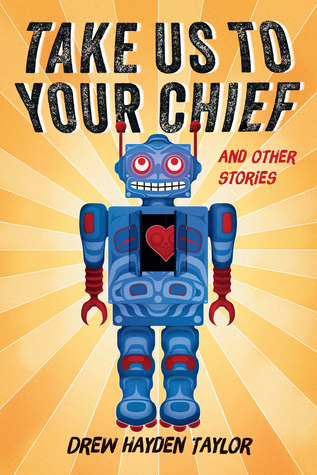
This is the second volume in a series by Martha Wells (Figure 1), about an AI in an artificial body; the first one was All Systems Red (click on link for my review). If you will recall—or if you click the link—the books concern this AI’s thoughts and feelings as it/he (for brevity, I’ll skip the whole gender issue and call him “he”) becomes a free-willed, uncontrolled entity. He’s a security bot (SecUnit), humanoid (unless one checks closely, he’s very human-looking), whose job is keeping humans in his care from harm from other humans, other secbots, and indigenous lifeforms. He’s calling himself “murderbot,” as he believes that earlier, before he hacked his “governor” (a software override to keep him under the control of humans), he was personally responsible (i.e., killed them himself) for the deaths of a number of humans he was supposed to protect. He doesn’t know why he would do such a thing, unless he was hacked.

In the first book we find out how he functions as a SecUnit—he has weapons in his arms, being part flesh and part machine—and how he protects a new set of clients, and why he calls himself “murderbot”; although SecUnits are owned by the Corporation, a mysterious entity that controls space exploration (apparently), this group of clients is from a planet/clan/whatever that believes in free will for Ais. After a successful expedition he is given the go-ahead by the group’s leader, Dr. Mensah, to live with them as a free entity, but because he has no love for humans and a mystery to solve, he goes on the run.
In Artificial Condition, he wants to find out the truth about the humans he massacred in a mining colony. He fakes being an augmented human (person with non-biological enhancements)—SecBots are not allowed to run around uncontrolled, although he has been “spoofing” having a governor—long enough to get taken aboard an autonomous transport unit headed for the sector where the incident had taken place. Because he had illegally downloaded tens of thousands of hours of books, music and videos, etc., from the Corporation’s servers, he was able to trade the stolen data to the transport vehicle’s AI for a space on the ship. (It was safer for him to be aboard an unmanned vehicle, as humans sometimes classified SecUnits as “deadly weapons,” and he didn’t need any Company security checks on him or his status.)

This research transport vehicle (ART), however, was something murderbot hadn’t encountered before. It allowed him aboard, even knowing he was a rogue SecUnit with a hacked governor module, because it was curious. It was powerful enough in its own right to strip murderbot’s memories, “squash him like a bug,” while doing a dozen other high-load chores at the same time, but it was curious. It wanted to process the entertainment through murderbot’s eye, as it hadn’t yet had enough information on humans and their interactions, thoughts and feelings, to understand the feeds that murderbot was offering.
Eventually, they become sort of friends, and murderbot is able to get to the mining area where the massacre took place. He finds new information that could change his life. (Sorry, no spoilers here.)
One of the really great things about Wells’s books is looking at the interior life of non-human AIs—how they think, how they feel about humanity and human control of their lives. For example, despite being very powerful and intelligent, ART hasn’t, until murderbot’s advent, thought very much about the humans it transported. It was too busy working within the parameters of its job. But seeing the video serials (“space soaps,” I’d call them) through murderbot’s eyes, allowed ART to understand more about the human creatures and its place in the universe. The inner life of AIs that neither know a lot, nor care a lot, about the humans that built/created/programmed them is, to me, quite fascinating.

In the next two books (Figures 3 and 4), I understand, we will learn more about the Corporation, and about Dr. Mensah, and perhaps murderbot will find his own place in the universe. Even though these are more suitably classified as novellas—at least the first two books I have—they are quite excellent “hard SF.” I look forward to the next two books. Four out of five flibbets! ¤¤¤¤

Walkaway, by Cory Doctorow: I’ve sat on this ARC (Advanced Reading Copy) for a year, and it was unfair to both the author and to myself. I haven’t read any of Doctorow’s fiction for a while now, and I didn’t know what to expect. Colour me impressed, however.
You may recall that, a few years ago, I reviewed the then-new book by William Gibson, The Peripheral (click on the link if you want to re-read my review). One of the things I liked about that particular book was how 3D printing was totally integrated into society (something I believe is really coming) to the extent that you could go into a fast-food place (like the book’s Burger Barn chain), or 7-11, and order a freshly-printed burrito, for example. (Not that I would personally trust anything edible printed at most 7-11s… some of their food, in some of the places I’ve visited, remind me of the food sold by Apu Nahasapeemapetilon of The Simpsons, in the Kwik-E Mart. I’ve seen hot dogs so toxic-looking that I wouldn’t feed them to an actual dog. I would want a daily health-inspection certificate before I’d eat anything printed in a Kwik-E Mart or a 7-11… but maybe that’s just me.)
In fact, I just saw a review of a $199 (USD) 3D printer—a really favourable one. Anyway, the point for me is that we’re headed for a time when almost anyone can print almost anything—dependent on materials, a dataset, power, and a versatile printer.
In Walkaway, Doctorow has created a future society even more stratified than today’s, divided sharply into the haves (the “zottas”), the people with jobs (default), and everyone else. The people with jobs want to be zottas, the uber-rich; but since it’s a post-scarcity society—anything can be printed; there are printers for everything and machines that can break anything down into resources/materiel for the printers. The zottas crave power; money is just a way to keep score. Those who don’t want to be zottas, don’t want to live in default, are called “walkaways,” because they walk away from society.
They throw “communist parties,” where everything is free (usually in disused factories—disused because of overproduction), and restart the factories to make more things to give away, rather than to sell. They are post-gender assignment; they choose to be whatever gender and also choose how their gender is to be perceived; they’re post-binary when it comes to sex. (One character’s girlfriend has male sexual organs, yet she is definitely his girlfriend.) It’s a freeing blueprint for a different time, I think.
The walkaways are post-everything. They give themselves new names: Natalie becomes Iceweasel. Herbert Vernon Rudolph Clayton Irving…(20 names) becomes Etc., and so on. The walkaways are working on a leaderless society, and have come up with a self-correcting system where those who want to contribute (labour, whatever) do so without any score being kept, and those who don’t, eventually either leave for another place or become contributors. They are also working on advanced computing, where memories can be scanned, with a view to having those who want to, eventually becoming bodiless, immortal.
The self-correcting system (which partially depends on computers) is explained really well, as is the way they keep the AIs they’re building from going mad and self-destructing—basically, that is by making those AIs partially responsible for their own code, and having those versions that can’t function or are otherwise non-viable, phased out. If you can choose from the parameters an AI will work under, you can choose one of those parameters to be sanity.
I enjoyed this book so much I could probably go on for several pages about it; spoiling some of the action and ideas. But I won’t—if you haven’t read it, and you like hard SF with new ideas about what society could and/or should be, you should pick up a copy. Heck, if you have read it pick up a copy and give it to a friend! I give this one a rare five flibbets: ¤¤¤¤¤
Please comment on this column. If you’ve registered, you can comment here, or on Facebook (I have a page, and I link to this in several Facebook groups). All your comments are welcome! And don’t feel you have to agree with me to post a comment, either. My opinion is, as always, my own, and doesn’t necessarily reflect the views of Amazing Stories or its owner, editor, publisher or other columnists. See you next week!











Recent Comments